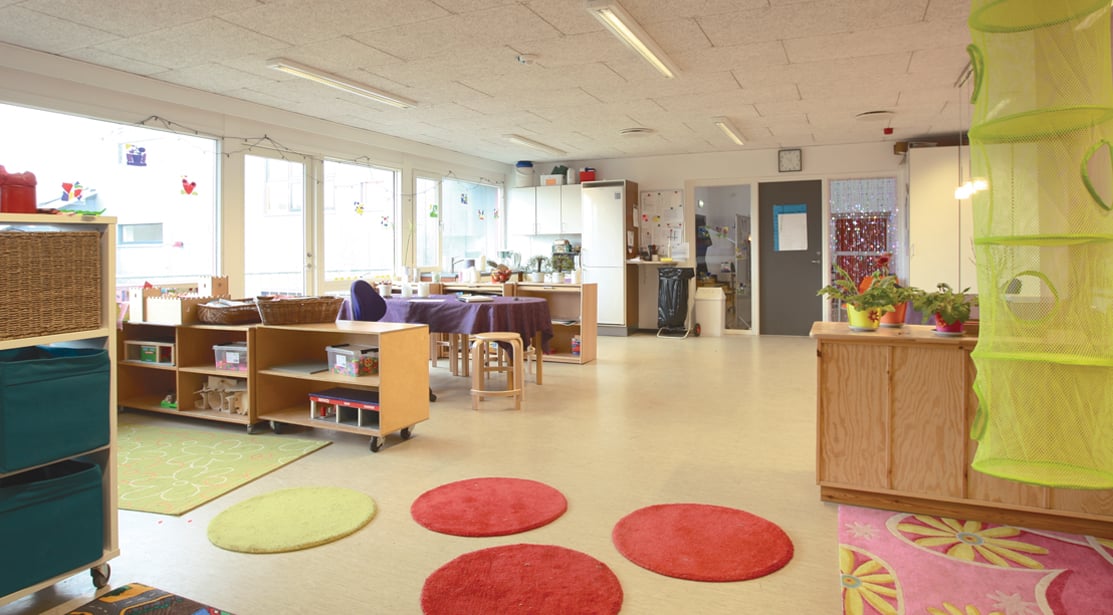It’s important to recognise that playroom lighting should be adapted to the needs of children of different ages. Visual perception develops up to the age of 12, and this period is also when children develop their fine motor skills. This means that it’s important to have more direct light in order to increase their depth of view.
Using fittings with only 30% uplight and 70% downlight makes it possible to create modelling shadows with the direct light portion to enhance the feeling of depth, facilitate spatial orientation and understanding of three-dimensional objects.
Appropriate light levels, low glare and good colour rendering are necessary when engaging in creative activities, contributing to a particularly comfortable learning environment.

Multifunctional playroom lighting should be flexible and easily adapted to various activities or zones, such as relaxation, reading or eating. Lighting control systems save energy by utilising available daylight or dimming down the light in various zones when needed. Tunable White luminaires that change the light’s colour temperature have a documented positive effect on children’s ability to concentrate, and can help reduce hyperactivity.
Lighting requirements in EN 12464-1:2021
| Type of task / activity area |
Lux-level (Em) |
Glare rating (UGRL) |
Uniformity (U0) |
Colour rendition (Ra) |
Em,z | Em,wall | Em,ceiling | Specific requirements |
|
| required | modified | U0 ≥ 0,10 | |||||||
| Play room | 300 | 500 | 22 | 0,40 | 80 | 100 | 100 | 75 | High luminances should be avoided in viewing directions from below by use of diffuse covers |
| Nursery | 300 | 500 | 22 | 0,40 | 80 | 100 | 100 | 75 | High luminances should be avoided in viewing directions from below by use of diffuse covers |
| Handicraft room | 300 | 500 | 19 | 0,60 | 80 | 100 | 100 | 75 | Illuminance at floor level |
